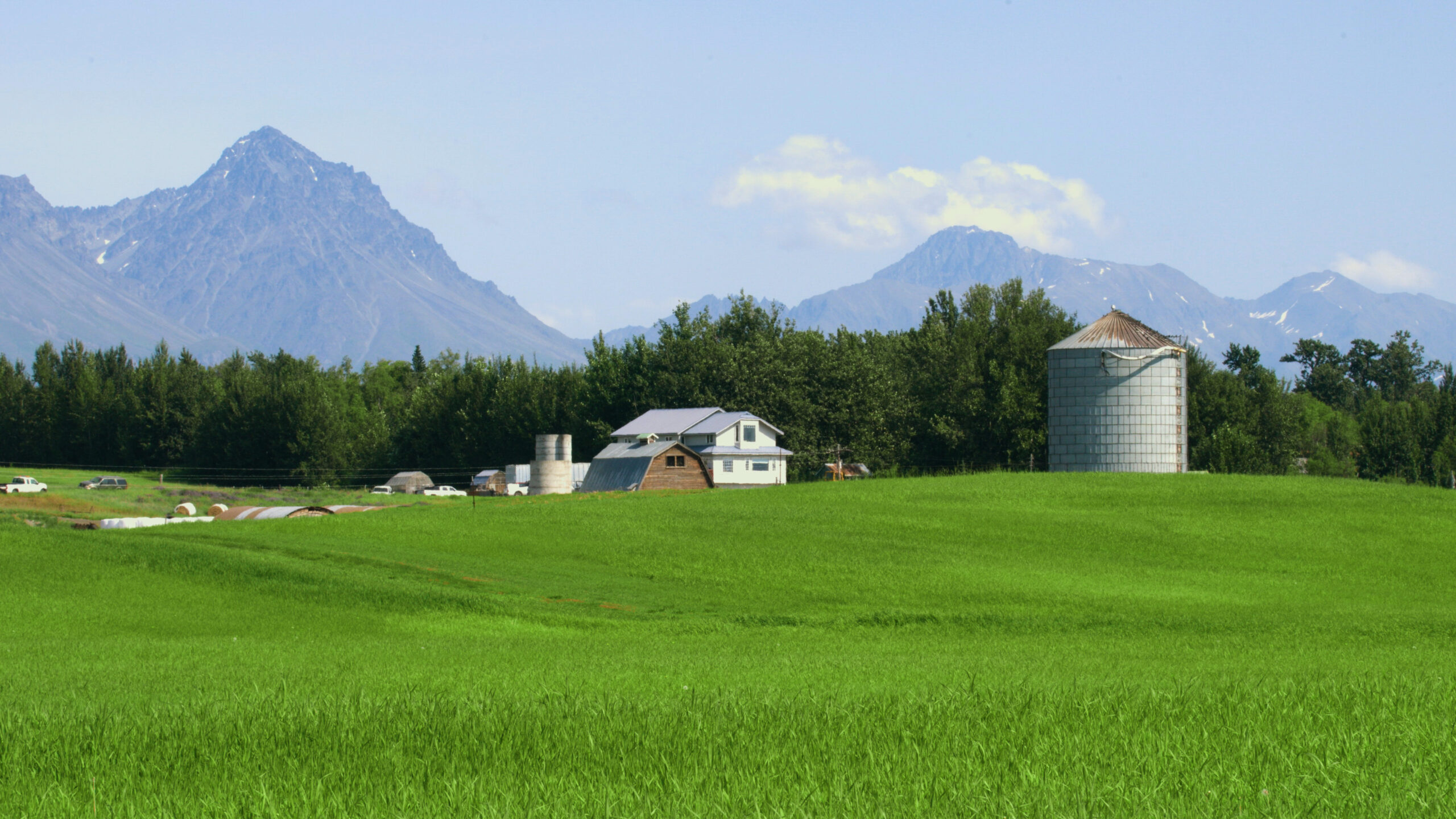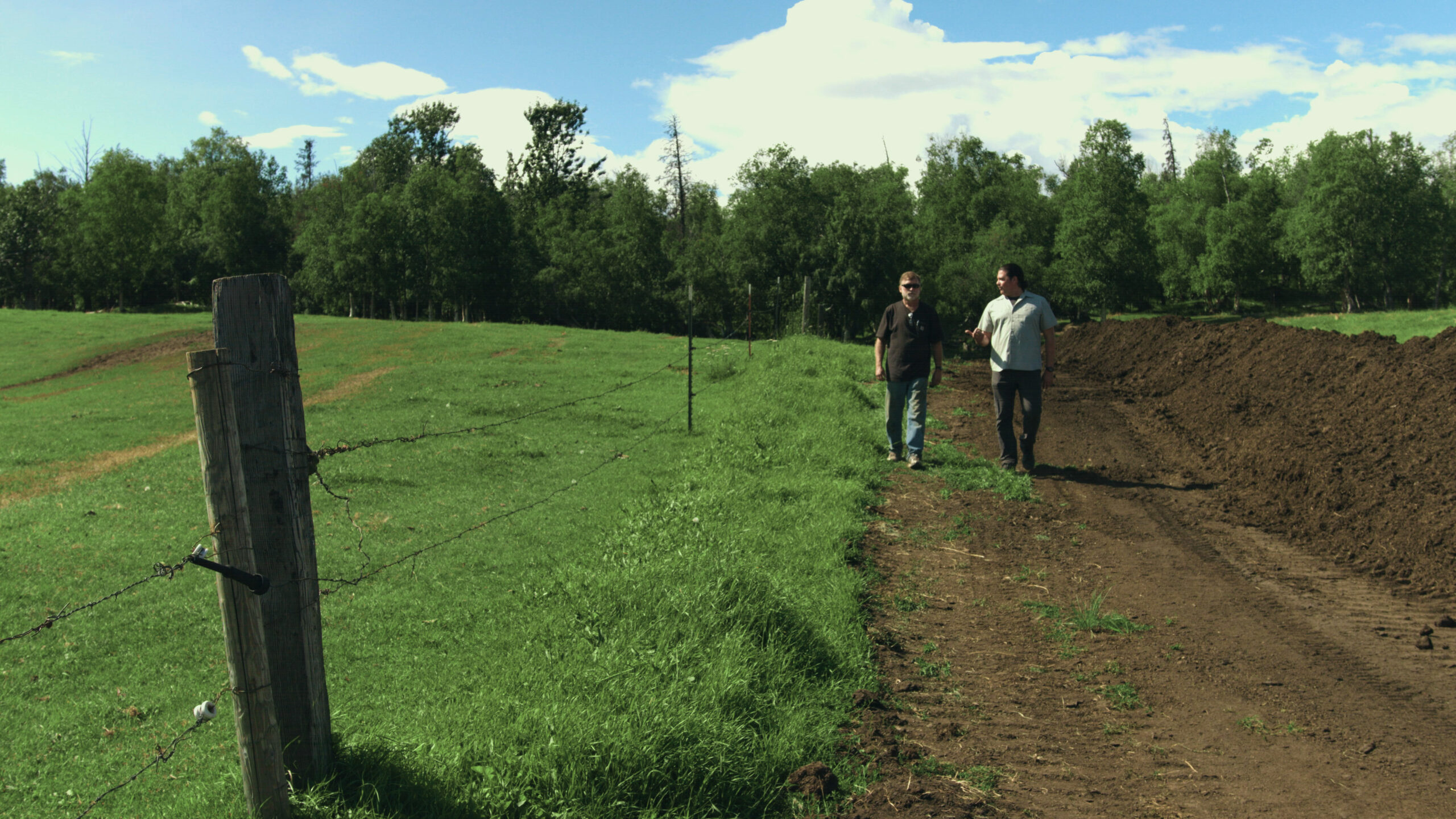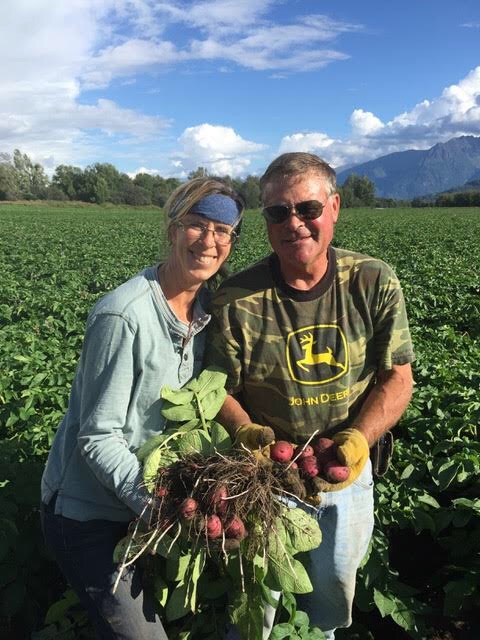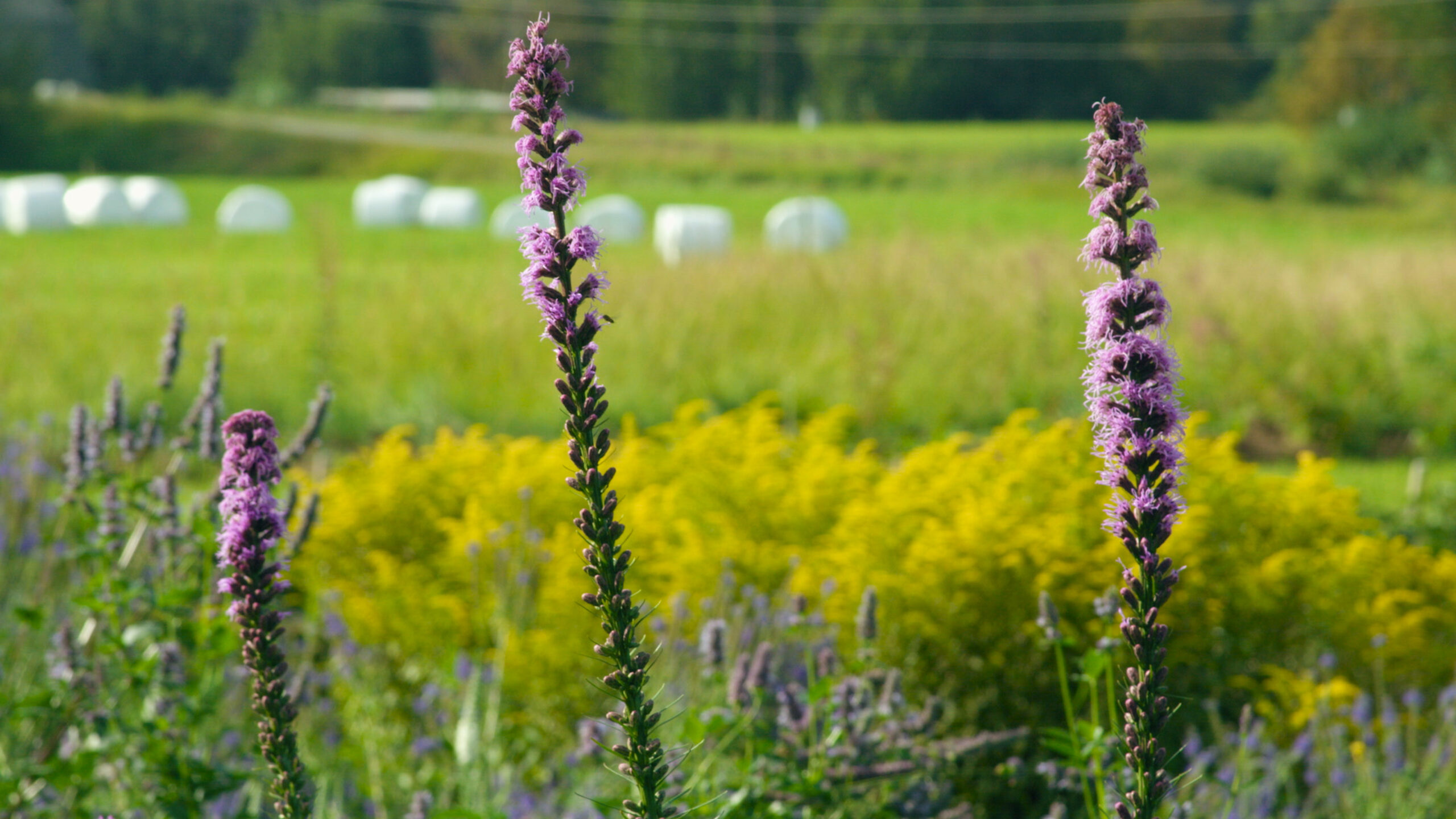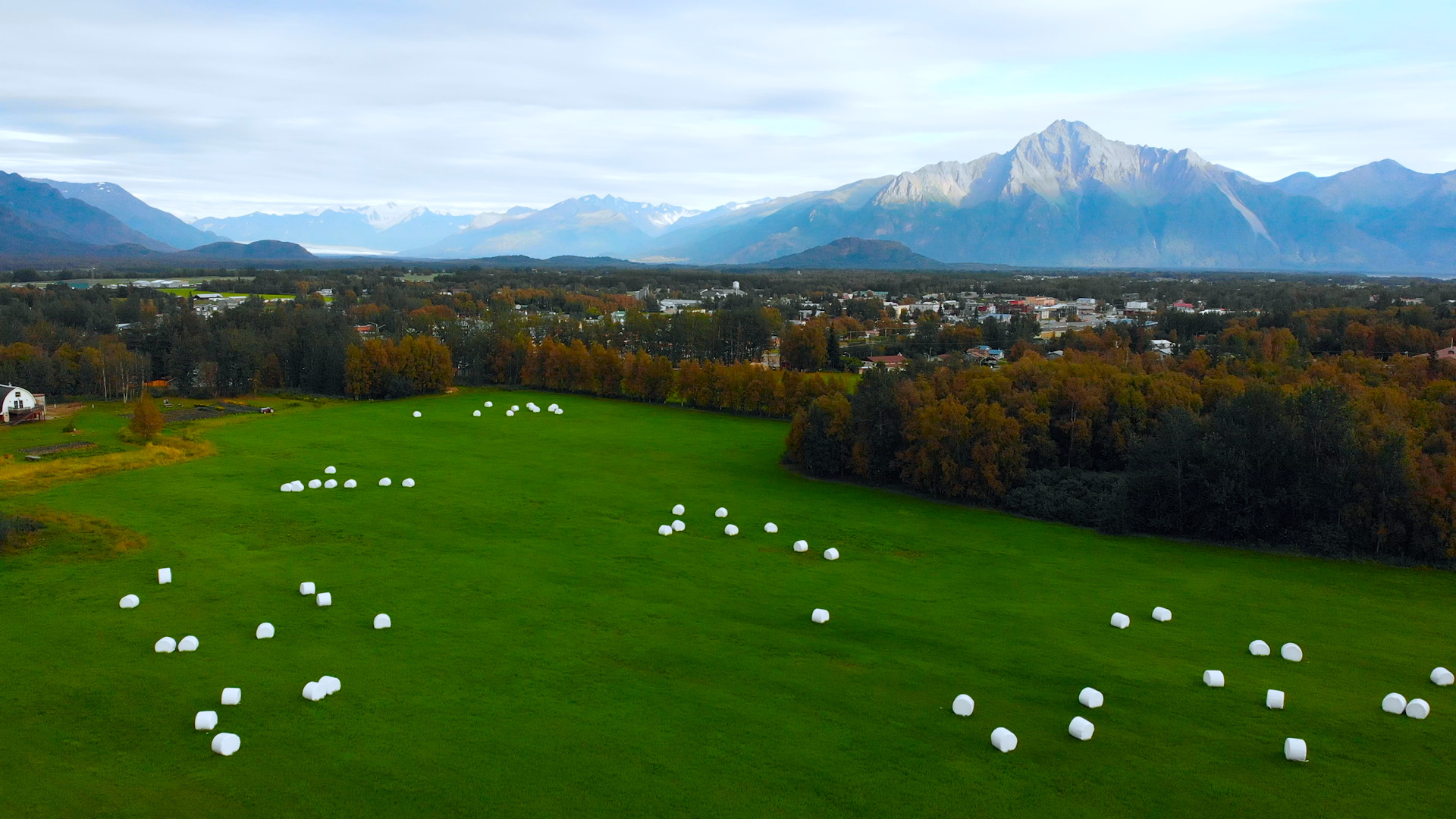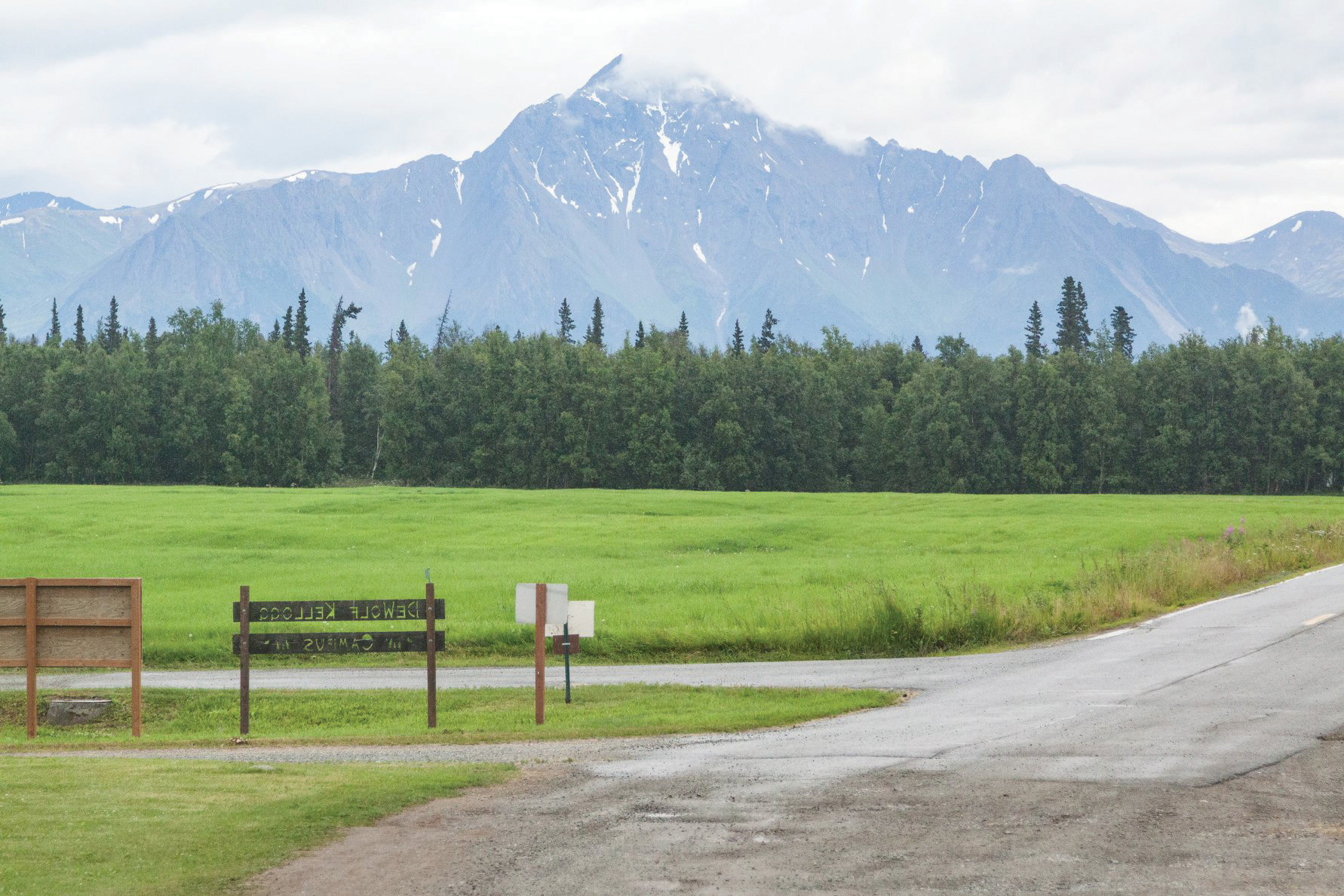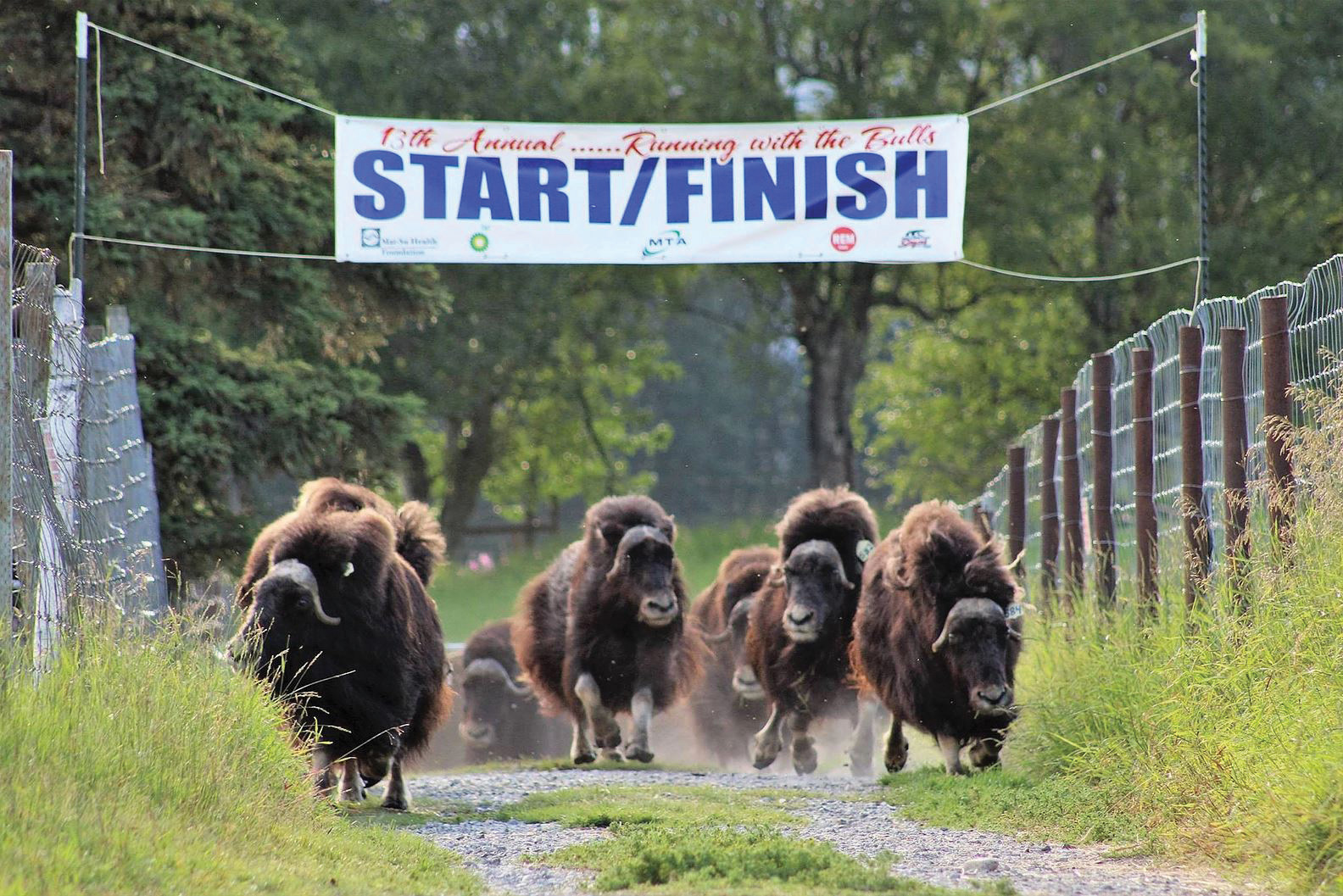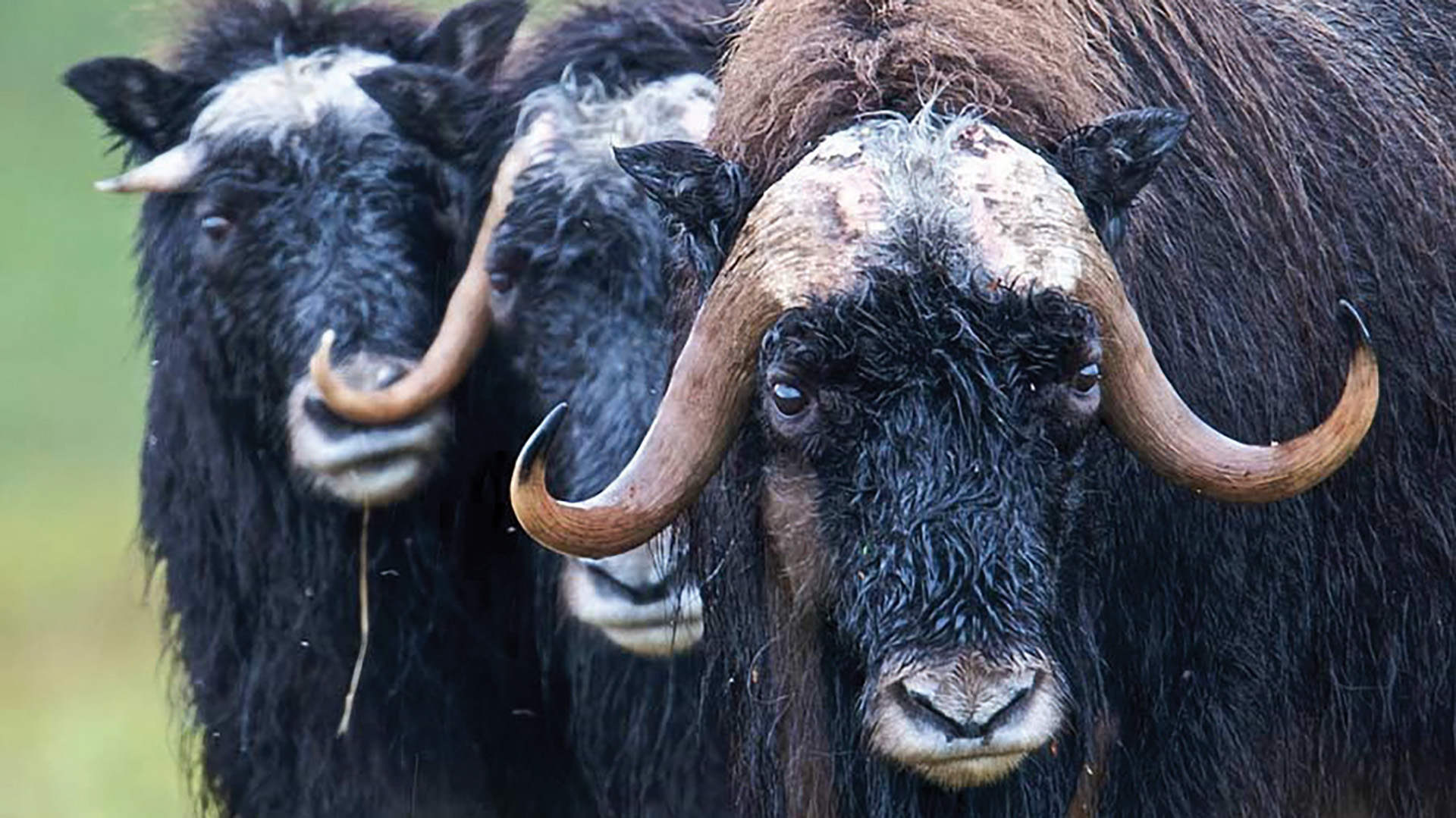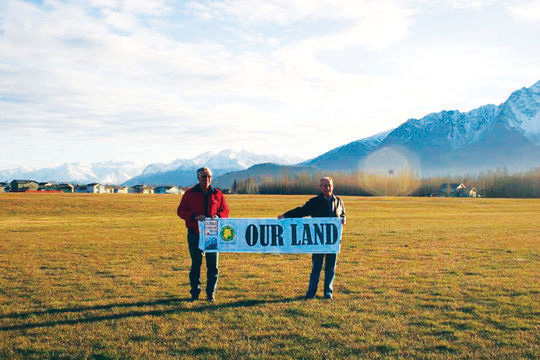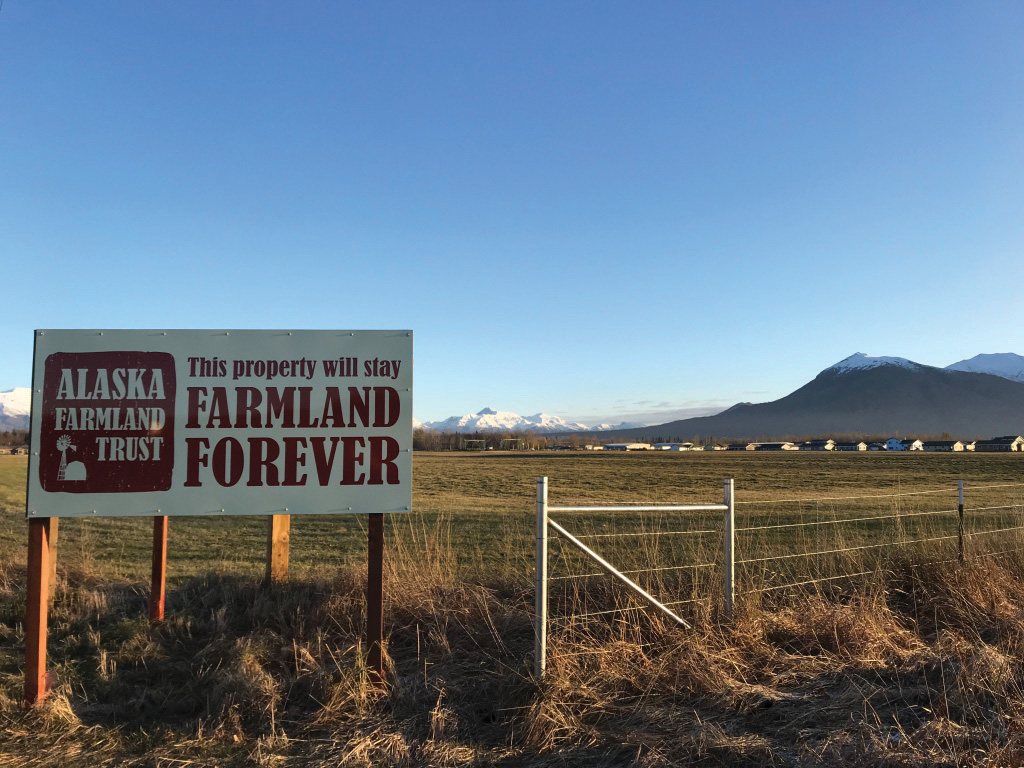Protected Farmland
Alaska Farmland Trust works across the state of Alaska to keep our agricultural lands in production by protecting those lands at greatest risk for being lost to development.
On the map, you’ll notice our agricultural lands are concentrated in the areas with the greatest amount of development over the past 75 years. Each of the pins marks the general location of our protected parcels.
Moffitt Farm
- 96 acres
- Current Use: Hay Production & Beef Cattle
- Historical Use: Hay, Beef Cattle & Dairy
- Agricultural conservation easement established in 2023
The Moffitt Farm, located just north of Palmer, has been a working farm for the last 8 decades. Originally the farm was established as a part of the Matanuska Colony project in the 1930s. Since 1945, three generations of Moffitts have stewarded the land. Once nearly 1,000 acres, the farm was an active dairy run by Tracy’s father and uncle. Met with challenges that face farmers across the nation, the family has had to sell off portions of the property to help pay for farming as well as the retirement and healthcare for aging parents. Today, the farm raises a herd of beef cattle, featured at 49th State Brewing Company in Anchorage, and hay for its animals.
Lewis Farm
- 63 acres
- Current Use: Hay Production
- Historical Use: Potato Production
- Agricultural conservation easement established in 2020
In 2008, Pam and Brad Lewis were named Alaska State Fair’s Farm Family of the Year. Third generation Alaskan farmer, Brad Lewis, has been farming since the 1980s in Palmer with his wife Pam and two sons. With forty years of farming and feeding Alaskans under their belt, Pam and Brad were ready to retire and spend time with growing grandchildren. The Lewises leave a lasting legacy to the greater Palmer area with the permanent protection of 63 acres of their farm.
Mountain Field Farm
Donated Conservation Easement
- 16 acres
- Current Use: Hay, Mixed Vegetable & Floral Production
- Historical Use: Hay, Mixed Vegetable Production
- Agricultural conservation easement established in 2018
Sarah Phipps’ dream of saving the farm she grew up on was realized in 2018. After extensive renovations, removing decades of debris and scrap metal, the restored Colony Barn, peony fields and prolific soil are providing both food and joy to the community again.
Sarah & her husband Taylor were interested in donating the easement on their property and worked with the Trust to realize the tax incentives available to them for their generous and lasting legacy.
Alaska Pacific University’s Spring Creek Farm
Conservation Easement Held by Great Land Trust
This project was made possible through a collaboration between Alaska Farmland Trust, Great Land Trust, the M.J. Murdock Charitable Trust, the USDA Natural Resource Conservation Service (NRCS), the DeWolf-Kellogg Trust, and Alaska Pacific University (APU).
- 77 acres
- Current Use: Hay Production
- Historical Use: Dairy Farm & Hay Production
- Agricultural conservation easement established in 2017
Louise Kellogg was a young woman in 1947 when she came to Alaska to start her farm. The cards were stacked against her, but she persevered to run Spring Creek Farm, one of the most successful dairies in the state. She loved the land, and made it her mission to keep as much land intact as possible. By the time of her death she had acquired 900 acres just north of Palmer.
Today, Spring Creek Farm is used for multiple educational purposes: classes are held in the farmhouse most evenings. The trails, established by Louise, are open to the public for use throughout the year. During the school year, Alaska Pacific University students studying for their Masters of Science and Environment use the learning center to host an educational enrichment program for local homeschooling families. In the summer, the learning center is used for educational programs and camps.
The Musk Ox Farm
- 68 acres
- Current Use: Musk Ox Grazing Lands & Hay Production
- Historical Use: Dairy Farm
- Agricultural conservation easement established in 2016
William and Viola Lentz were colonists from Wisconsin who came to Palmer in 1935. They drew a parcel of property just north of Palmer that would become an internationally known farm. They cleared the property and stuck it out, keeping it in dairy production through the mid-60s. They sold the property in 1970 and it changed hands a few times until it was purchased by the Musk Ox Development Corporation (MODC), known today as the Musk Ox Farm.
Each year, thousands of people from around the world visit the Musk Ox Farm to learn about the domestication process of the world’s warmest wool. When the MODC’s board of directors decided to go ahead with the conservation easement, they began on a six year journey that culminated in the permanent protection of 68 acres of the farm. Mark Austin, the current executive director, is proud of what he and the board have accomplished. “This is our legacy as the nonprofit, no matter what our great success and failures are with the musk ox, the land will be preserved,” he declared.
Alaska State Fair
- 40 acres
- Current Use: Hay Production
- Historical Use: Hay Production for Adjacent Dairy Farm
- Agricultural conservation easement established in 2014
Part of the original Hamilton Dairy Farm, this 40-acre parcel located across from the Alaska State Fair is one of the most striking examples of the threat of encroaching development on agricultural parcels. When standing in the fields, houses dominate the horizon.
Alaska State Fair Board of Director Danny Consenstein was instrumental in helping put the conservation easement in place. He, along with the rest of the board, felt it was an important part of the Alaska State Fair’s mission. “We have this strong educational mission to educate fairgoers about agriculture. Farmland protection seemed so important for us because we are such a high profile organization and this region of the state has such strong agricultural roots,” said Consenstein. “When we, the Alaska State Fair, do things, they have a bigger sounding board for the rest of the state. If we, as the Fair, were to make a statement about the importance of protecting farmland, then we could fulfill our educational role.”
McCormick Farm
- 80 acres
- Current Use: Hay Production
- Historical Use: Hay Production
- Agricultural conservation easement established in 2010
James and Debra McCormick raised their four children on their farm since purchasing the property in 1986 from the Moffitt family. “I love this farm and this state. It has been very good to me and my family,” said James McCormick, “It has been so great to have my children involved in the farm and I work hard every day to keep the farm going.” McCormick hays the property, providing food for his own ranch operation and livestock farmers in the community. “I’m a little fish in a big pond, but I’m one contributor to help folks have the option to raise livestock in the State of Alaska.”
Heaven’s Hayfield
- 40 acres
- Current Use: Vegetable and Hay Production
- Historical Use: Vegetable and Hay Production
- Agricultural conservation easement established in 2008
Margaret and LeRoi Heaven are part of the reason Alaska Farmland Trust exists. They worked tirelessly for years to get their 40 acre parcel, lovingly called Heaven’s Hayfield, put in a conservation easement. Margaret and LeRoi were historical conservationists who adopted and restored old homestead cabins, which they moved to their farm. They loved their parcel and shared it with their community, letting community groups use the property when not in production as a hay and potato field.
LeRoi and Margaret passed away in 2010 and 2013, respectively, but their agricultural legacy lives on in their property, which continues forward under the new ownership of Tom and Ann DeSalvo, who are currently increasing the farm’s vegetable production.
History of Farmland Protection
Although a statewide entity, Alaska Farmland Trust has focused its work in core area of the Matanuska Valley. Situated in the confluence of the Matansuka River and the Knik River, the fertile valley lands were selected as the site for the 1935 Colonist project that brought 200 families from the upper Midwest to what is now Palmer, Alaska. The families opened up and established farms across the Matanuska Valley. Farms in the Mat-Su Valley continue to be an incredible asset not only to our community, but to Alaska as a whole. Farms have community value, agricultural value, and future food production value. Farms, particularly in the Mat-Su Valley, have high quality agricultural soils, are centrally located, have demonstrated the ability to produce food, and are well- known and revered by community members.
Development Erases Farmland
In the 75 years since the first colony farms were built, Mat-Su’s population has blossomed to over 82,000 people. From 2000-2007 alone, the population grew by 21,000. This population growth puts increasing pressures on farmlands. Agricultural land is cleared, flat, often with existing infrastructure- perfect for development. This same land is also a critical community resource providing Alaskans with food. We work to protect these critical food and agricultural lands.
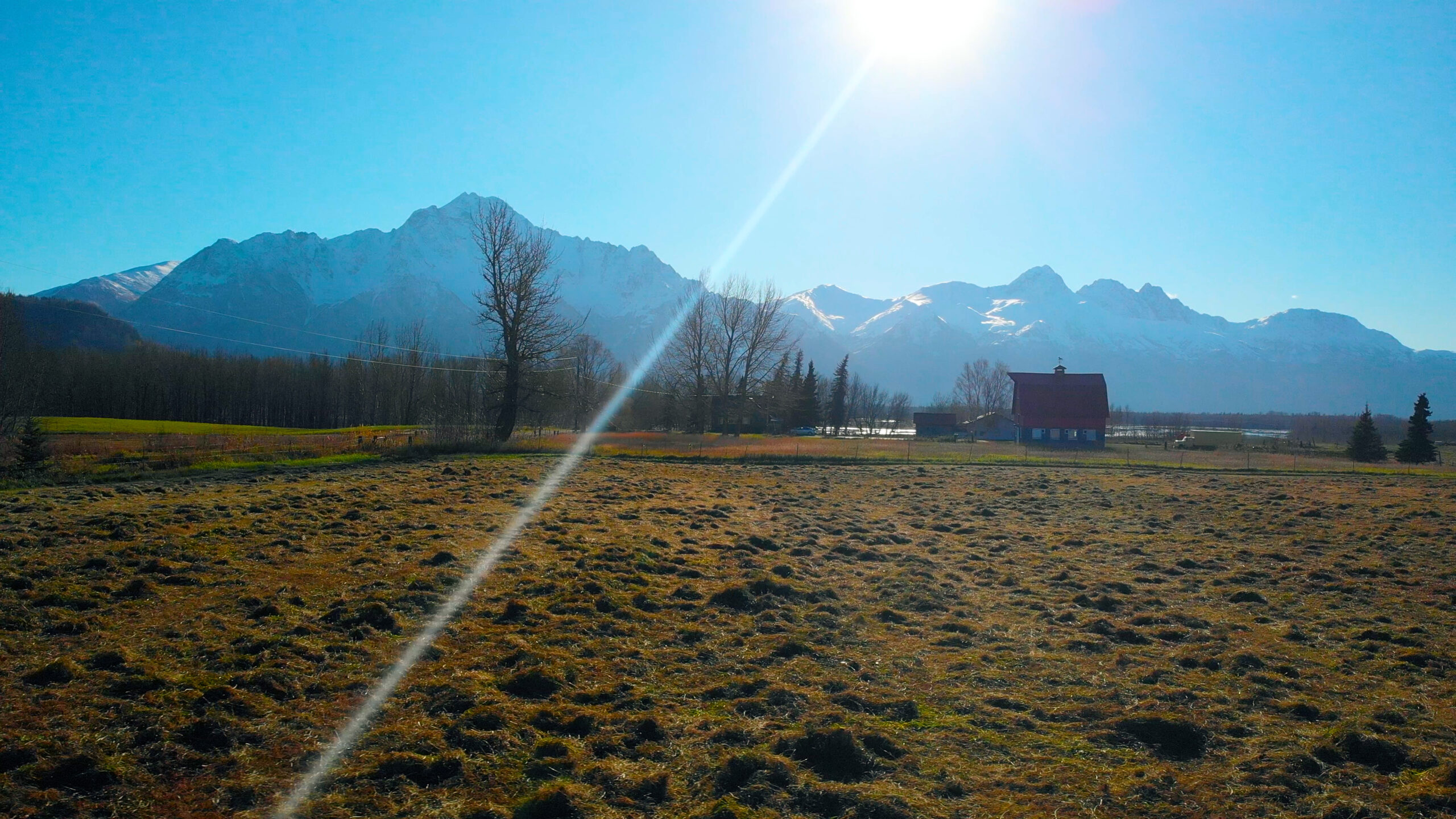
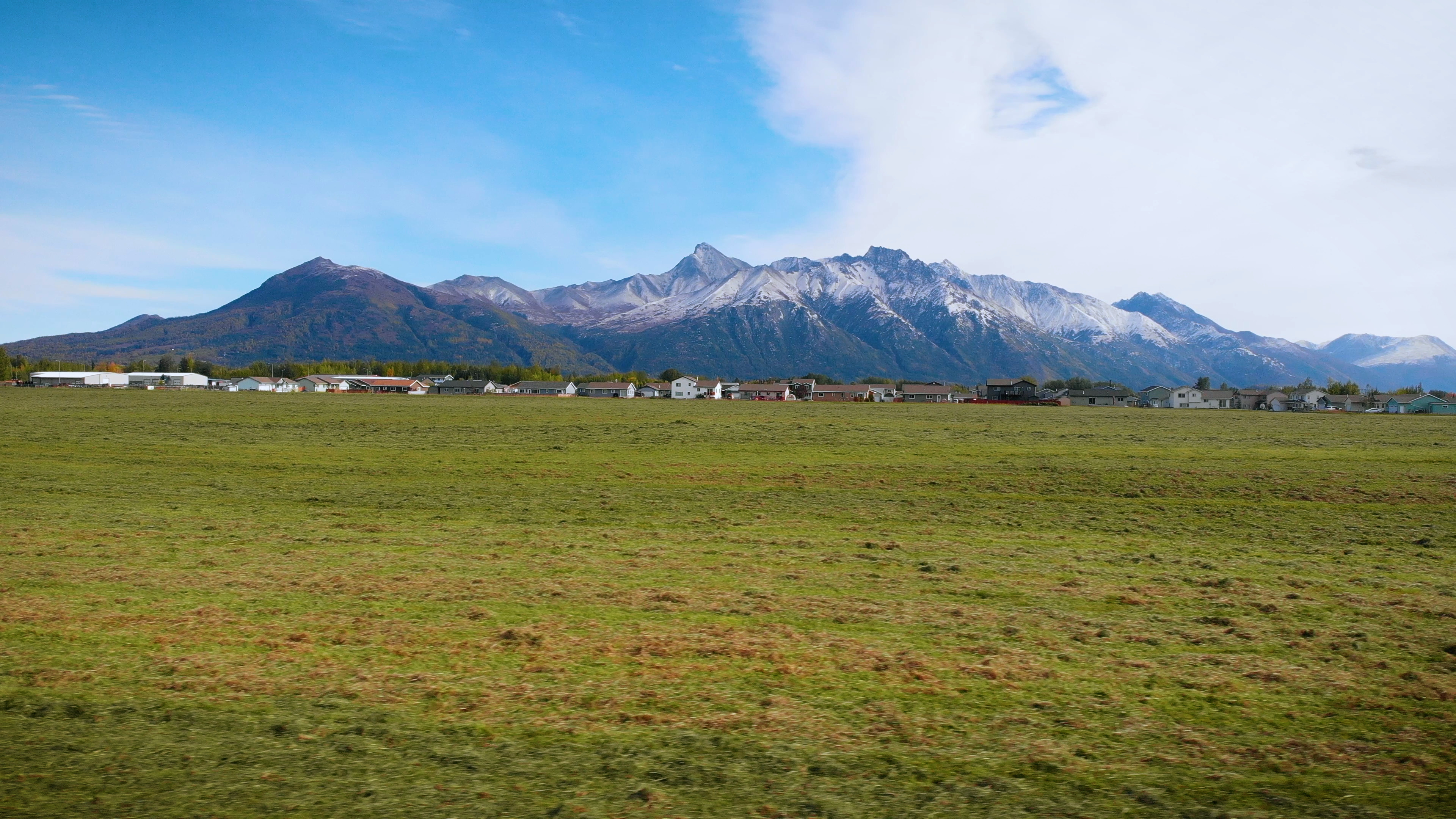

The Alaska Farmland Trust envisions a future with thriving local food markets that will give Alaskans access to fresh, healthy food, and keep our farmers farming.
